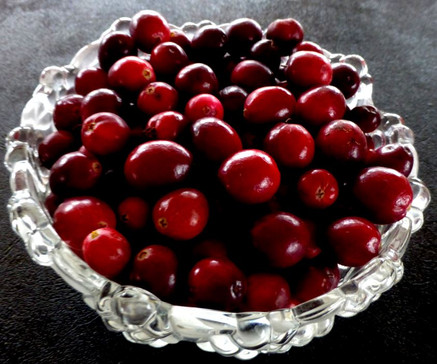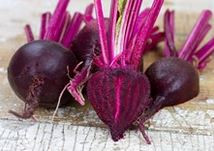Tis the season of good cheer and to nurture your immune system through the simple act of eating red foods. I talk to many people who do not listen to their body. This season discover how easy it is to give yourself the gift of health.
Red foods are the root to providing health to your adrenal glands, blood cells bones & joints, DNA, and skin. You need brilliant scarlet in your diet for gene expression, fight or flight response, and proper enzyme and protein production.
Unfortunately, Americans are hooked on two colors in their diet, white and brown. Take the challenge for 3 days and write down the colors of the foods that you are consuming.
Our immune system is complex, but simply, it is comprised of layers of protective barriers. Once you put up these defenses they will protective you from a host of infections such as the cold and flu as well as chronic diseases like Type 2 Diabetes, cardiovascular disease, neuro-degenerative disease, and even cancer.
One tool in your toolkit of health are antioxidants which destroy of neutralize free radicals from many environmental factors. When our body produces to many free radicals cellular damage, inflammation, and chronic disease results.
What is a phyto-nutrient? Phyto-nutrients are chemicals referring to a number of natural compounds found in plants that are powerfully beneficial in protecting us from diseases.
What is a micro-nutrient? Micro-nutrients are nutrients required by organisms throughout life in small quantities to orchestrate a range of physiological functions
Think of antioxidants as holiday decorations adorning your bodily home. Homes with bountiful antioxidants are filled with vigor and well-being.
Foundational fitness is build upon Vitamins C and E and beta-carotene. Working out on the farm at the first sign of a virus I bump up my intake of Vitamin C and beta-carotene, always with great results.
Indigo Apple with extra Lycopene
This year I have been experimenting with crops that include a powerful micro-nutrient, Lycopene. This antioxidant gives red fruits and vegetables their color or blush. They are really fun to grow and each has a unique complex flavor.
Examples of these nutrients include vitamins C and E, beta-carotene, and a variety of polyphenol compounds, which are naturally occurring micronutrients that have antioxidant properties. Lycopene is a powerful carotenoid antioxidant nutrient that gives some red fruits and vegetables their color.
Did you know?
Berries contain natural antioxidants like vitamins C and E, beta-carotene, and polyphenol compounds.
Anthocyanins are flavonoid compounds found in strawberries, cherries, and red berry fruits. These antioxidants are critical for brain health and cardiovascular health in men and women.
Tomatoes contain lycopene, a carotenoid compound giving them their red color that has been studied for its antioxidant benefits in cardiovascular health and cancer prevention.
Today's tomatoes can be truly exotic. You can choose various shapes from the traditional round to pear shaped, fluted, heirloom, to wild. Flavors can range from complex so sweet to sour.
Vitamin C is important for your immune system, it serves as an antioxidant, and it helps the body resist infection by supporting immune cell functions.
Many people believe that they can store or process a food such as rose hips to get their natural Vitamin C. Processing destroys Vitamin C and most Vitamin C on the market is synthetic and comes from China. The alternative to synthetics is to add plants with a high Vitamin C content to your garden that will mature year round.
Vitamin E is an important fat-soluble antioxidant vitamin. It must be obtained from the diet, and it may depend on another antioxidant, vitamin C, for optimal function.
Oxidation and oxidative stress can weaken the immune system and are linked to cancer, aging, diabetes, and cardiovascular disease, and vitamin E as an antioxidant can help protect you against this oxidative process.
Beta-carotene is an antioxidant carotenoid compound, and it has been studied for its protective role against cancer and cardiovascular disease.
Hollyhock and Sweet Cherry Clafoutis
A creative way to incorporate your whole garden to support you with your healthy resolutions is to integrate flowers and red herbs and spices into your diet. Make sure whatever you are planning to eat is eatable and after that enjoy petals in salads, in omelets, and other cuisine.
Red colored fruits that support your immune health include:
Cranberries These antioxidant rich berries may help raise your overall antioxidant potential and reduce the risk of oxidative stress, which can help improve parameters of metabolic syndrome, benefit your cardiovascular system, and even show benefits for urinary tract infections.
Cranberries have their maximum amount of nutrients and taste when they are eaten fresh, and you can take advantage of their tartness by using them instead of vinegar or lemon in your salads.
Cranberry bushes are easy to grow and make an attractive row hedge.
Apples Apple polyphenols help support the balance of bacteria in your lower digestive tract, and your gut bacteria are a major determinant of the health of your immune system.
Red apples contain anthocyanins, and apples in general contain flavonols like catechins, epicatechins, and procyanidins, as well as quercetin, all important antioxidant nutrients found both in the skin and flesh of the fruit, which may provide cardiovascular, and anticancer benefits.
Select apples that are firm and rich in color, and you can expect this resilient fruit to stay fresh in your refrigerator for several weeks. Apple skin is nutrient rich, so consider leaving the skin on, even in baking recipes, and choose organic over non-organic to avoid issues with pesticide residues.
Growing apple trees is easy! You can grow dwarf or columnar apple trees on your deck or garden. If you have trouble deciding what apple is your favorite you can grow an espalier or grafted tree and enjoy different varieties on one apple tree. Very early spring is the time to order as popular varieties sell out fast.
Other red colored fruits to enjoy for their taste and their health benefits include blood orange, watermelon, raspberries, strawberries, red currants, red plums, cherries, pomegranate, and nectarines.
Red colored vegetables that provide antioxidant nutrients to support your immune system and your root include:
Beets contain phytonutrients called betalains, which give beets their red color, have been studied for their antioxidant and anti-inflammatory properties, and for detoxification support.
Beets will detoxic your body from the constant heavy metal exposure that we are experiencing.
Buy beets that are small or medium in size, have firm roots, smooth skin, and a deep color, and avoid those that have spots, bruises, or soft, wet areas. The concentration of betalains in beets is depleted by heat, so cook your beets lightly, such as quick steaming them for 15 minutes. Beets can be eaten cooked as well as raw. You can simply grate them and use them in salads or any other dish or soup.
Beets are one of those vegetables that you either like or dislike. You might try pickled beets that have a spicy tangy taste. They are one of my most popular sellers at Farmers Markets. You can also use your beets for refreshing fermented detox beverage called Beet Kvass.
Tomatoes and Tomato-Based Products (vine-ripened, cherry, sun-dried tomato, tomato paste, tomato sauce, salsa)
Tomatoes are rich in lycopene, a red pigmented carotenoid, that has antioxidant properties and may help reduce risk of certain cancers.
Tomatoes are rich in other antioxidant carotenoids like lutein, beta-carotene, zeaxanthin; flavonol antioxidants like quercetin; and vitamins A, C, and E, as well as manganese. The antioxidant nutrients found in tomatoes may have benefits in cardiovascular disease and cancer prevention.
Pick tomatoes that are rich in color, well-shaped, smooth skinned, without cracks, bruises, wrinkles or soft spots. Ripe tomatoes smell sweet and yield to minor pressure. When cooking tomatoes avoid using aluminum cookware because the high acid content of the tomatoes can interact with the metal cookware, and aluminum can leach into the food, which can lead to health risks.
Is your body craving a specific micro-nutrient? These days tomatoes come in all colors for every micro-nutrient and flavor. Black, red, yellow, orange, tie-dye...the sky is the limit!
Radishes, red onion, red potato, red cabbage, red bell peppers, and red jalapeño peppers are examples of other red vegetables that support your root and immune system.
One last thought on ways to incorporate red into your diet is to consider fermenting. From champagne to sauerkraut enjoy excess harvest of red veg by turning them into 'happy gut' food in as little as three days of fermenting.
May your colorful journey be brimming with health!
Sources:
Deanna Minich, Rainbow Diet








